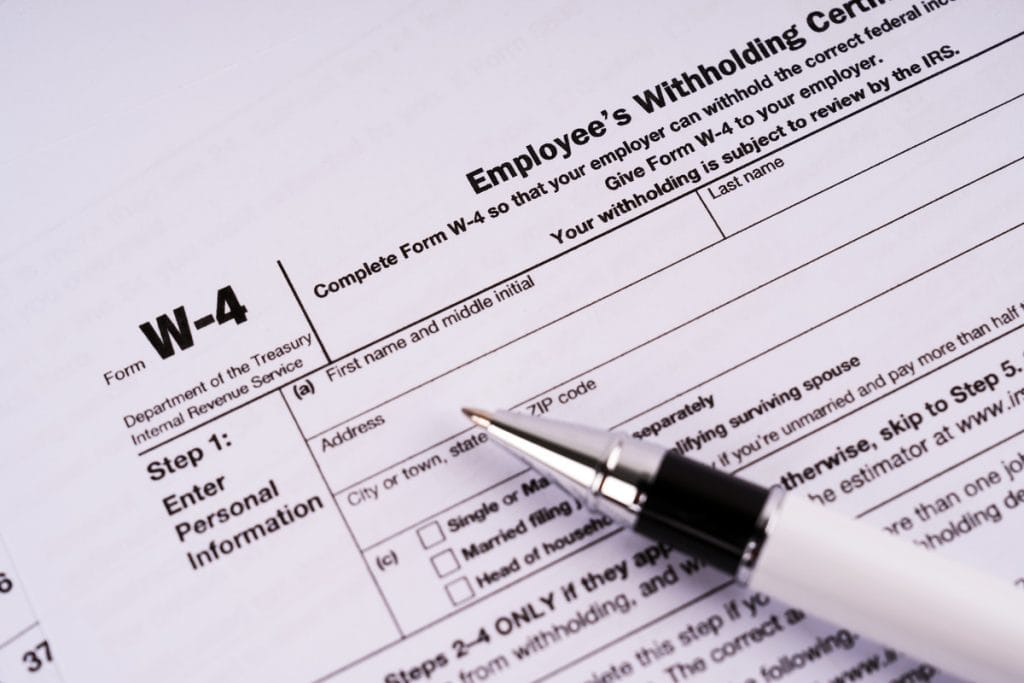🎧 Listen to This Article
The Tax Withholding Dilemma: A Yearly Reckoning
For many employees, tax withholding is a concept filed away and rarely revisited until the year’s end. Yet, the stakes of this seemingly routine task could not be higher: when tax season arrives, many face the surprise of a hefty tax bill or an unexpected refund. This scenario often signals a disconnect between what was withheld from paychecks and the tax liability.
So, what’s the problem? If your withholding isn’t on point, it can cost you a large sum when you file your taxes or mean a bloated refund that could’ve been put to better use throughout the year. Whether you are looking to optimize your tax return or ensure that your withholding aligns with your actual tax obligation, now is the time to pay attention to how much is being withheld from your paycheck.
Read More: Navigating the 2026 Tax Deduction Tables: Key Changes and Considerations for Employees
It may sound like a simple task, but the nuances of tax withholding affect your immediate financial situation and your long-term tax strategy. Adjusting your tax withholding can be especially important for those who have experienced changes in life circumstances, such as marriage, having children, or a significant change in income.
In the U.S., the form used to adjust your withholding is the W-4, the document you submit to your employer. Its purpose is to ensure enough money is deducted from your paycheck throughout the year to cover your anticipated tax liability. If too much is withheld, you may receive a refund, which, while it may seem like a bonus, is essentially the money you’ve overpaid in advance. On the other hand, if too little is withheld, you might face a surprise tax bill when you file your return.
The Impact of Under- or Over-Withholding: What’s at Stake
1. The Refund Dilemma:
A large refund can feel like a financial windfall, but it’s a double-edged sword. This excess withholding could have been used better throughout the year, whether in investments, savings, or meeting immediate financial goals. Essentially, it’s an interest-free loan to the government, and most financial advisors would recommend optimizing this process to ensure more of your money stays in your hands during the year.
2. The Tax Bill Trap:
Conversely, if you are under withhold, you might have a large tax bill come tax time. This could force you to scramble to cover the payment or possibly face underpayment penalties. For self-employed individuals or those with additional income sources, the problem can be compounded by missed quarterly estimated tax payments, which require separate attention and adjustment.
The Mechanics of Adjusting Your Withholding: A Step-by-Step Guide
Adjusting your withholding may seem daunting, but it’s a relatively straightforward process. Here’s how to navigate it effectively:
- Obtain Your W-4 Form:
This form can be filled out at any time during the year, and you can submit a revised version to your employer whenever there are significant life changes or shifts in your income. - Assess Your Current Withholding:
To determine if you need to adjust, the IRS provides an online Tax Withholding Estimator, which helps you assess whether your current withholding will result in an overpayment or underpayment. You’ll need details from your paychecks and tax filing status to complete the estimator. - Fill Out the W-4 Correctly:
The W-4 has gone through changes in recent years, with the goal of making withholding more accurate. You’ll provide personal information like filing status, allowances, and additional adjustments for things like child tax credits or deductions. - Submit Your New W-4 to Your Employer:
Once the form is completed, submit it to your HR department or payroll provider. They will update your withholding based on the new information you’ve provided. - Monitor and Adjust as Needed:
Throughout the year, continue to monitor your paycheck to ensure that the correct amount is being withheld. If your financial situation changes again, consider adjusting your W-4 once more.
Self-Employed? Don’t Forget Estimated Taxes
While the W-4 applies only to employees, self-employed individuals face their own set of challenges when it comes to tax withholding. Since taxes are not automatically withheld from income for freelancers, business owners, or contractors, you are required to pay estimated taxes directly to the IRS. These payments must be made quarterly and are typically calculated using your projected income for the year.
If you find yourself on a bumpy income trajectory, adjusting your estimated payments might be necessary to avoid underpayment penalties. Tools such as the IRS Estimated Tax Worksheet can help determine how much you should be setting aside to stay on track.
What’s Next? Why Now is the Time to Adjust
Adjusting your tax withholding isn’t just a matter of compliance; it’s a strategic decision that can optimize your financial outcomes. By fine-tuning how much is withheld from your paycheck, you can better align with your tax liability, avoid unwanted surprises, and put your money to better use throughout the year.
The Strategic Takeaway:
- For Employees: Use the IRS Withholding Estimator regularly to monitor your withholding. Adjust your W-4 at key moments in your financial life—such as marriage, having children, or a job change.
- For Self-Employed Individuals: Make sure your estimated payments align with your income fluctuations. Tools like the IRS worksheet can help you avoid overpayment or underpayment penalties.
- For Financial Advisors: Help clients optimize their withholding or estimated payments based on their financial circumstances. Regular checks and adjustments ensure clients are keeping their money, rather than overpaying throughout the year.
Conclusion: Getting Tax Time Right, Year-Round
The key takeaway here is that adjusting your withholding is not a one-time fix, but an ongoing process that should align with your financial goals and life changes. Whether you’re an employee or self-employed, making these adjustments proactively ensures that you’re not surprised by your tax outcome—be it a refund or a bill. By getting this right, you ensure that you’re not over- or under-paying, and that your finances stay on track throughout the year.
For further details, clarification, contributions, or any concerns regarding this article, please get in touch with us at editorial@tax.news. We value your feedback and are committed to providing accurate and timely information. Please note that our privacy policy will handle all inquiries.


